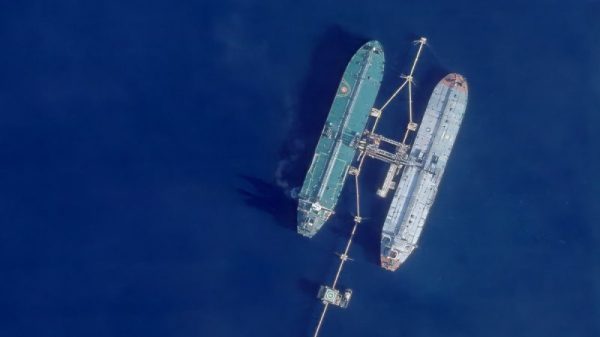Energy Fuels Inc. (NYSE American: UUUU) (TSX: EFR) (‘Energy Fuels’ or the ‘Company’), an industry leader in uranium and rare earth elements (‘REE‘) production, today reported its financial results for the quarter ended September 30, 2024. The Company previously announced details for its upcoming November 1, 2024, earnings call, which are also included in this news release.
‘Uranium drives our current financial outlook, while rare earth elements and heavy mineral sand products are significantly adding to our long-term value and growth strategy,’ said Mark Chalmers, Energy Fuels’ President and Chief Executive Officer. ‘This quarter, we maintained our clean balance sheet while adding a new long-term U.S. utility customer, completing another spot sale of U3O8, and commencing processing of the large inventory stockpile of uranium feedstock at the White Mesa Mill, which is expected to continue well into 2025 and beyond. Uranium production is, and will remain, the core of the Energy Fuels’ business, as we leverage our unique permits, facilities and expertise to process uranium-bearing materials to produce a variety of critical materials that advance the global energy transition through an American-based supply chain. We have long been a leading U.S. uranium producer, and we have now proven our ability to produce important rare earth materials at commercial scale with the completion and successful commissioning of our REE separation circuit this quarter. We are also aggressively moving forward with our plans to secure rare earth feedstocks globally and expand our processing capacity domestically in order to capture market share and achieve profitability. Our acquisition of Base Resources Limited and its world-class Toliara heavy mineral sands/monazite project in Madagascar on October 2, 2024 is an exciting step in achieving these objectives.
‘We invite all stakeholders to join us in our upcoming November 1, 2024, earnings call, details of which are below, to learn more about these exciting achievements.’
Q3-2024 Highlights
Unless noted otherwise, all dollar amounts are in U.S. dollars.
Over $10 Million of Additional Liquidity from Market Value of Inventory: At October 28, 2024 commodity prices, the Company’s product inventory has a market value of approximately $23.79 million, while the balance sheet reflects product inventory carried at cost of $13.38 million.
Incurred Net Loss of $12 Million: During the three months ended September 30, 2024, the Company incurred a net loss of $12.08 million, or $0.07 per common share, primarily due to transaction and integrations costs related to the Donald Project joint venture (described below), the acquisition of Base Resources (described below) and recurring operating expenses, partially offset by sales of natural uranium concentrates (‘U3O8‘).
Uranium Continues to Drive Revenue: The Company sold 50,000 pounds of U3O8 on the spot market at a realized sales price of $80.00 per pound of U3O8 for total proceeds of $4.00 million, which resulted in a gross profit of $2.15 million and a gross margin of 54%.
New Long-Term Uranium Sales Contract with U.S. Utility: The Company added a fourth long-term uranium sales contract to its existing portfolio. Under the contract, the Company expects to deliver a total of 270,000 to 330,000 pounds of uranium between 2026 and 2027, and potentially an additional 180,000 to 220,000 pounds until 2029, under a ‘hybrid’ pricing formula, subject to floor and ceiling prices, that maintains exposure to further uranium market upside and protection from inflation.
‘Phase 1’ REE Separation Circuit Successfully Commissioned: Final commissioning of the Phase 1 REE separation circuit at the Company’s White Mesa Mill (the ‘Mill‘) was successfully completed during the quarter resulting in the production of approximately 38 tonnes of ‘on-spec’ separated NdPr.
Samples of NdPr Actively Being Qualified by Potential Customers: NdPr produced at the Mill is currently being qualified with permanent magnet manufacturers and other potential customers to set the stage for potential offtake in the future.
Well-Stocked to Capture Market Opportunities: As of September 30, 2024, the Company held 235,000 pounds of finished U3O8 and 805,000 pounds of U3O8 in ore and raw materials and work-in-progress inventory for a total of 1,040,000 pounds of U3O8 in inventory. This inventory increased from last quarter due to Pinyon Plain, La Sal and Pandora mine ore production and additional alternate feed materials received, partially offset by our spot sale during Q3-2024. The Company expects these uranium inventories to continue increasing as we continue to mine additional ore. The Company also held 905,000 pounds of finished vanadium (‘V2O5‘), 38 tonnes of finished separated neodymium praseodymium (‘NdPr‘) and 9 tonnes of finished high purity, partially separated mixed rare earth carbonate (‘RE Carbonate‘) in inventory.
Capitalizing on Strong Uranium Pricing:
Due to uranium market tailwinds and upcoming commitments in long-term contracts with U.S. nuclear utilities, the Company is currently mining and stockpiling uranium ore from its Pinyon Plain, La Sal and Pandora mines and plans to ramp up to a production run-rate of approximately 1.1 to 1.4 million pounds of U3O8 per year by late-2024.
The Company expects to produce a total of 150,000 to 200,000 pounds of finished U3O8 during 2024 from stockpiled alternate feed materials and newly mined ore, which is at the lower end of our previous guidance of 150,000 to 500,000 pounds of finished U3O8 during 2024, due to delays in transporting ore from the Pinyon Plain mine to the White Mesa Mill, which is expected to be resolved in Q4-2024. Mining continues at the Pinyon Plain mine, with mined ore being stockpiled at the mine site, containing approximately 180,000 pounds of U3O8 at September 30, 2024, which is expected to be processed at the Mill later in 2024 or in early 2025.
During Q3-2024, the Company received positive results from drill holes during ongoing preparations at its Nichols Ranchin situ recovery (‘ISR‘) Project in Wyoming. Both the Nichols Ranch Project and Whirlwind Mine in Colorado are being prepared for production and are within one year of a ‘go’ decision, as market conditions warrant. Production from these mines, when combined with alternate feed materials, uranium from monazite, and 3rd party uranium ore purchases, would be expected to increase the Company’s production run-rate to roughly two million pounds per year by as early as 2026.
The Company continued advancing permitting and other pre-development activities on its large-scale Roca Honda, and Bullfrog uranium projects in Q3-2024, which together with its Sheep Mountain Project, have the potential to expand the Company’s uranium production to a run-rate of up to five million pounds of U3O8 per year in the coming years.
As of October 28, 2024, the spot price of U3O8 was $81.00 per pound and the long-term price of U3O8 was $82.00 per pound, according to data from TradeTech.
Rare Earth Element Production Milestones:
The Company produced about 38 tonnes of separated NdPr from its newly commissioned Phase 1 REE separation circuit at the Mill in Q2- and Q3-2024.
Samples of the Company’s NdPr product have been sent to permanent magnet and other companies around the world for product qualification, and initial testing responses have been positive.
Heavy Mineral Sands:
On October 2, 2024, the Company announced it completed its previously announced acquisition of all the issued and outstanding shares of Base Resources Ltd. (‘Base Resources‘), which is expected to transform the Company into a global leader in critical minerals production, including HMS (titanium and zirconium), REEs and uranium. The acquisition of Base includes the advanced, world-class Toliara HMS project in Madagascar. In addition to its stand-alone, ilmenite, rutile (titanium) and zircon (zirconium) production capability, the Toliara Project also contains a long-life, high-value and low-cost monazite (REEs) stream, produced as a byproduct of primary titanium and zirconium production. Toliara’s monazite is expected to be processed at the Mill into separated REE products, along with uranium, at globally competitive capital and operating costs. The Toliara Project is subject to negotiation of fiscal terms with the Madagascar government and the receipt of certain Madagascar government approvals and actions before a current suspension on activities at the Toliara Project will be lifted and development may occur. The transaction also includes Base’s management, mine development and operations teams, who have a successful track-record of designing, constructing, and profitably operating a world-class HMS operation in Kenya.
The Company continued to advance the Donald Project (the ‘Donald Project‘), a large monazite-rich HMS project in Australia, pursuant to its joint venture with Astron Corporation limited, announced in Q2-2024. The Company expects that a final investment decision (‘FID‘) will be made on the Donald Project as early as 2025.
During Q3-2024, the Company also continued to advance its wholly owned Bahia HMS project in Brazil (the ‘Bahia Project‘) with its Phase 2 drilling campaign, which is expected to continue through the rest of the year. Additionally, the Company completed bulk test work on a 2.5 tonne sample in March 2024, and recently shipped a larger 15 tonne sample to the U.S. for additional process test work. The Company expects to complete a U.S. Subpart 1300 of Regulation S-K (‘S-K 1300‘) and Canadian National Instrument 43-101 (‘NI 43-101‘) compliant mineral resource estimate on the Bahia Project during 2024.
Vanadium Highlights:
The Company chose not to execute any vanadium sales during Q3-2024 and holds about 905,000 pounds of V2O5 in inventory.
As of October 28, 2024, the spot price of V2O5 was $5.25 per pound, according to data from Fastmarkets.
Medical Isotope Highlights:
On August 19, 2024, the Company announced it acquired RadTran LLC (‘RadTran‘), a private company specializing in the separation of critical radioisotopes, to further the Company’s plans for development and production of medical isotopes used in cancer treatments. RadTran’s expertise includes separation of radium-226 (‘Ra-226‘) and radium-228 (‘Ra-228‘) from uranium and thorium process streams. This acquisition is expected to significantly enhance Energy Fuels’ planned capabilities to address the global shortage of these essential isotopes used in emerging targeted alpha therapies (‘TAT‘) for cancer treatment.
The Company continues to utilize its research and development (‘R&D‘) license for the recovery of R&D quantities of Ra-226 at the Mill. Activities to set up the pilot facility at the Mill continued in Q3-2024 and are expected to progress through the end of the year, with the goal of producing R&D quantities of Ra-226 for testing by end-users of the product in late 2024 or early 2025.
Mr. Chalmers continued:
‘During the quarter, we achieved numerous additional milestones to bring the Energy Fuels’ vision to fruition for our innovative, low-cost, U.S.-centered critical mineral supply chain. As previously announced, shortly after the close of the quarter, we successfully completed our acquisition of Base Resources. This is a major piece of our strategic puzzle, bringing to the Company the Base Resources management and operations team and the world-class Toliara Project in Madagascar, which is considered by industry experts to be one of the best HMS projects in the world. With the Toliara Project, our joint venture on the Donald Project in Australia, and our 100% ownership of the Bahia Project, we have secured a leading position in the titanium and zirconium mineral industry, in addition to a low-cost source of REE feedstock that will be processed in the United States.
‘These developments have the potential to transform Energy Fuels into a world leader in titanium, zirconium, and rare earth elements production, while maintaining our position as a U.S. leader in uranium and vanadium production. All these materials are critical to the global energy transition and to our vision of creating a leading diversified critical minerals company.’
Conference Call and Webcast at 10:00 AM MT (12:00 pm ET) on November 1, 2024:
Conference call access with the ability to ask questions:
To instantly join the conference call by phone, please use the following link to easily register your name and phone number. After registering, you will receive a call immediately and be placed into the conference call
or
Alternatively, you may dial in to the conference call where you will be connected to the call by an Operator.
North American Toll Free: 1-800-510-2154
To view the webcast online:
Audience URL: https://app.webinar.net/5kM3dkJ6D4A
Conference Replay
Conference Replay Toronto: 1-289-819-1450
Conference Replay North American Toll Free: 1-888-660-6345
Conference Replay Entry Code: 53463 #
Conference Replay Expiration Date: 11/15/2024
The Company’s Quarterly Report on Form 10-Q has been filed with the U.S. Securities and Exchange Commission (‘SEC‘) and may be viewed on the Electronic Document Gathering and Retrieval System (‘EDGAR‘) at www.sec.gov/edgar, on the System for Electronic Data Analysis and Retrieval + (‘SEDAR+‘) at www.sedarplus.ca, and on the Company’s website at www.energyfuels.com. Unless noted otherwise, all dollar amounts are in U.S. dollars.
Selected Summary Financial Information:
ABOUT ENERGY FUELS
Energy Fuels is a leading US-based critical minerals company, focused on uranium, REEs, HMS, vanadium and medical isotopes. The Company has been the leading U.S. producer of natural uranium concentrate for the past several years, which is sold to nuclear utilities that process it further for the production of carbon-free nuclear energy and owns and operates several conventional and in situ recovery uranium projects in the western United States. The Company also owns the White Mesa Mill in Utah, which is the only fully licensed and operating conventional uranium processing facility in the United States. At the Mill, the Company also produces advanced REE products, vanadium oxide (when market conditions warrant), and is preparing to begin pilot-scale recovery of certain medical isotopes from existing uranium process streams needed for emerging cancer treatments. The Company also owns the operating Kwale HMS project in Kenya which is nearing the end of its life and is developing three (3) additional HMS projects, including the Toliara Project in Madagascar, the Bahia Project in Brazil, and the Donald Project in Australia in which the Company has the right to earn up to a 49% interest in a joint venture with Astron Corporation Limited. The Company is based in Lakewood, Colorado, near Denver, with its heavy mineral sands operations managed from Perth, Australia. The primary trading market for Energy Fuels’ common shares is the NYSE American under the trading symbol ‘UUUU,’ and the Company’s common shares are also listed on the Toronto Stock Exchange under the trading symbol ‘EFR.’ For more information on all we do, please visit http://www.energyfuels.com
Cautionary Note Regarding Forward-Looking Statements: This news release contains certain ‘Forward Looking Information’ and ‘Forward Looking Statements’ within the meaning of applicable United States and Canadian securities legislation, which may include, but are not limited to, statements with respect to: any expectation that the Company will maintain its position as a leading U.S.-based critical minerals company or as the leading producer of uranium in the U.S.; any expectation with respect to timelines to production; any expectation as to rates or quantities of production; any expectation as to costs of production or gross profits or gross margins; any expectation as to future sales or sales prices; any expectation that the Company will be profitable; any expectation that the Company’s permitting efforts will be successful and as to any potential future production from any properties that are in the permitting or development stage; any expectation with respect to the Company’s planned exploration programs; any expectation that the Company will achieve its business objective of becoming a long-term, profitable U.S. critical minerals company; any expectation that Energy Fuels will be successful in expanding its U.S. separation, or other value-added U.S. REE production capabilities at the Mill, or otherwise, including the timing of any facilities or other initiatives and the expected production capacity associated with any such production capabilities; any expectation that the Mill’s REE products will meet commercial expectations or result in commercial offtake agreements; any expectation that the Company will update the Mill PFS to increase throughput of the planned Phase 2 separation circuit; any expectation that the Company’s planned Phase 2 separation facility will complete engineering design and will receive all required permits and licenses on a timely basis or at all; any expectation that the Company is well-stocked to capture market opportunities; any expectation that the Bahia Project, Donald Project and/or Toliara Project will be low-cost sources of monazite feed for the Mill and/or also potentially produce significant standalone cashflow from the sale of ilmenite, rutile, zircon and other minerals; any expectation as to the exploration program to be conducted at the Bahia Project during 2024; any expectation that the Company will complete an S-K 1300 and NI 43-101 compliant mineral resource estimate for the Bahia Project during 2024, or otherwise; any expectation that a FID will be made on the Donald Project or that the Company will earn its full 49% interest in the Donald JV; any expectation that any production at the Bahia Project, Donald Project and/or Toliara Project or Mill will be world or globally competitive; any expectation that the Base Resources team will continue to have a successful track-record of designing, constructing, and profitably operating any of the Company’s HMS projects; any expectation that Energy Fuels will be successful in agreeing on fiscal terms with the Government of Madagascar or in achieving sufficient fiscal and legal stability for the Toliara Project; any expectation that the current suspension relating to the Toliara Project will be lifted in the near future or at all; any expectation that the additional permits for the recovery of Monazite at the Toliara Project will be acquired on a timely basis or at all; any expectation that the Toliara Project will become a world-class HMS project; any expectation about the long-term opportunity in REEs; any expectation that the Company will be globally competitive in its markets; any expectation that the Company will complete engineering on its R&D pilot facility for the production of Ra-226 at the Mill, will set up the first stage of the pilot facility, and produce R&D quantities of Ra-226 at the Mill for testing by end-users of the product or at all; any expectation that the Company’s evaluation of radioisotope recovery at the Mill will be successful; any expectation that any radioisotopes that can be recovered at the Mill will be sold on a commercial basis; any expectation as to the quantities to be delivered under existing uranium sales contracts; any expectation that the Company will be successful in completing any additional contracts for the sale of uranium to U.S. utilities on commercially reasonable terms or at all; and any expectation as to future uranium, vanadium, HMS or REE prices or market conditions. Generally, these forward-looking statements can be identified by the use of forward-looking terminology such as ‘plans,’ ‘expects,’ ‘does not expect,’ ‘is expected,’ ‘is likely,’ ‘budgets,’ ‘scheduled,’ ‘estimates,’ ‘forecasts,’ ‘intends,’ ‘anticipates,’ ‘does not anticipate,’ or ‘believes,’ or variations of such words and phrases, or state that certain actions, events or results ‘may,’ ‘could,’ ‘would,’ ‘might’ or ‘will be taken,’ ‘occur,’ ‘be achieved’ or ‘have the potential to.’ All statements, other than statements of historical fact, herein are considered to be forward-looking statements. Forward-looking statements involve known and unknown risks, uncertainties and other factors which may cause the actual results, performance or achievements of the Company to be materially different from any future results, performance or achievements express or implied by the forward-looking statements. Factors that could cause actual results to differ materially from those anticipated in these forward-looking statements include risks associated with: commodity prices and price fluctuations; engineering, construction, processing and mining difficulties, upsets and delays; permitting and licensing requirements and delays; changes to regulatory requirements; legal challenges; the availability of feed sources for the Mill; competition from other producers; public opinion; government and political actions; the failure of the Government of Madagascar to agree on fiscal terms for the Toliara Project or provide the approvals necessary to achieve sufficient fiscal and legal stability on acceptable terms and conditions or at all; the failure of the current suspension affecting the Toliara Project to be lifted on a timely basis or at all; the failure of the Company to obtain the required permits for the recovery of Monazite from the Toliara Project; the failure of the Company to provide or obtain the necessary financing required to develop the Toliara Project, the Donald Project, the Bahia Project and/or its expanded REE separations capacity; available supplies of monazite; the ability of the Mill to produce RE Carbonate, REE oxides or other REE products to meet commercial specifications on a commercial scale at acceptable costs or at all; market factors, including future demand for REEs; actual results differing from estimates and projections; the ability of the Mill to recover radium or other radioisotopes at reasonable costs or at all; market prices and demand for medical isotopes; and the other factors described under the caption ‘Risk Factors’ in the Company’s most recently filed Annual Report on Form 10-K, which is available for review on EDGAR at www.sec.gov/edgar, on SEDAR+ at www.sedarplus.ca, and on the Company’s website at www.energyfuels.com. Forward-looking statements contained herein are made as of the date of this news release, and the Company disclaims, other than as required by law, any obligation to update any forward-looking statements whether as a result of new information, results, future events, circumstances, or if management’s estimates or opinions should change, or otherwise. There can be no assurance that forward-looking statements will prove to be accurate, as actual results and future events could differ materially from those anticipated in such statements. Accordingly, the reader is cautioned not to place undue reliance on forward-looking statements. The Company assumes no obligation to update the information in this communication, except as otherwise required by law.
1 The information relating to the Donald Project’s estimated monazite production is based on the Donald DFS prepared on June 27, 2023. This study constituted a ‘Feasibility Study’ for the purposes of JORC, and the Ore Reserves underpinning this study were estimated in accordance with JORC. The results from this study may not be comparable to (as the case may be) data or estimates under either NI 43-101 or S-K 1300– see disclosure under ‘Technical Information.’
Source
Click here to connect with Energy Fuels Inc. (NYSE American:UUUU) (TSX:EFR) to receive an Investor Presentation


































